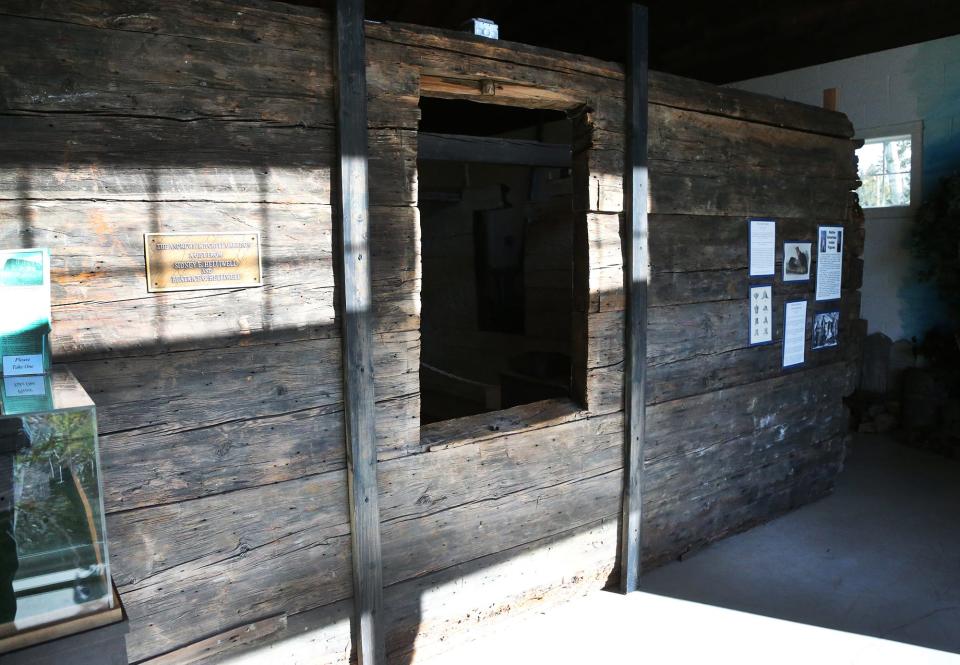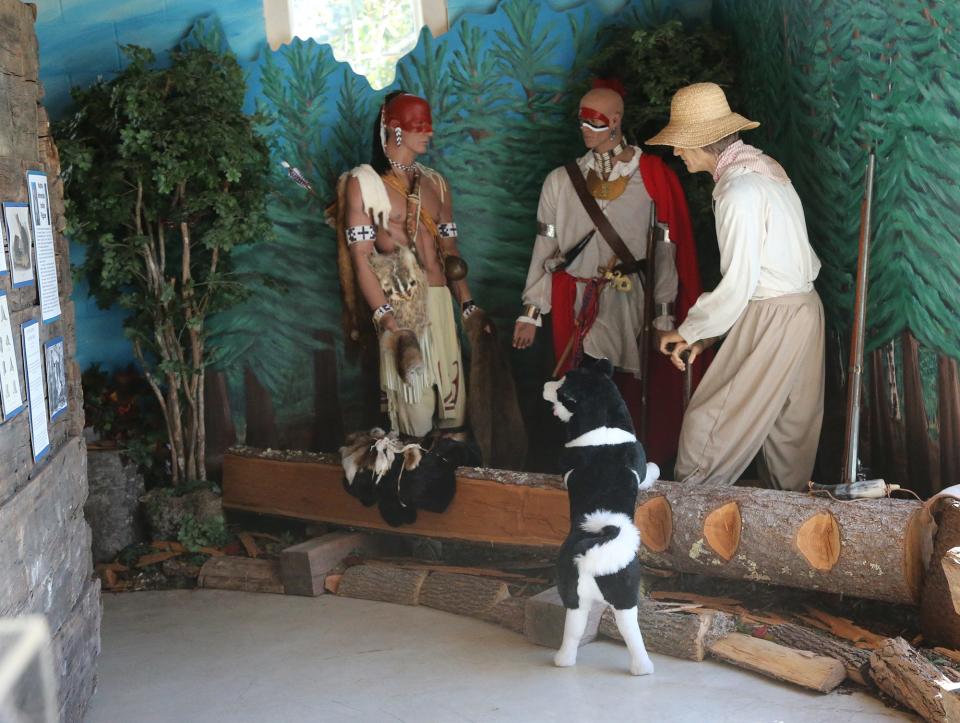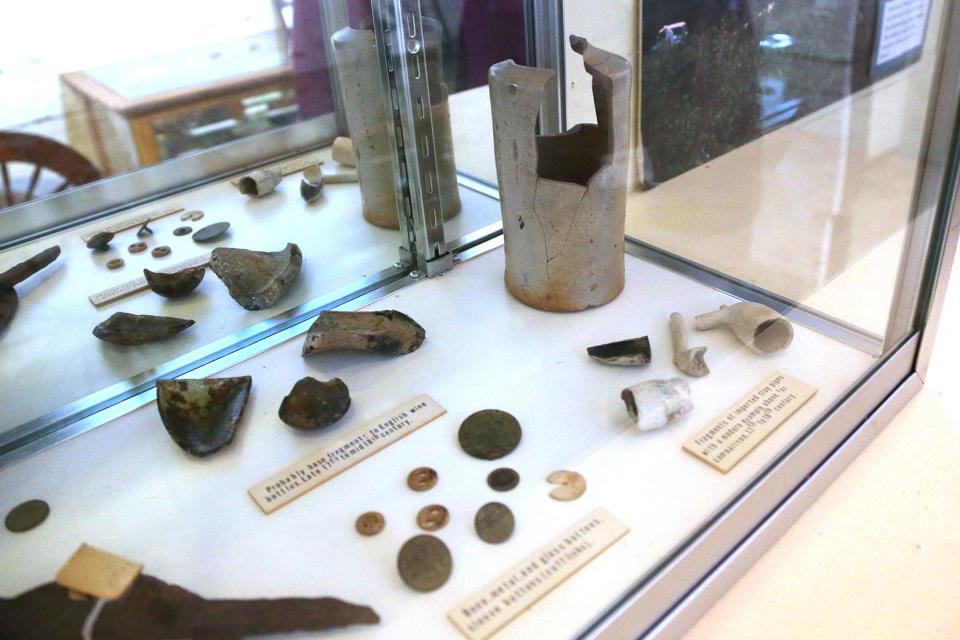Kittery's 375th: 'The perils of everyday life': When the town was a constant battleground

Maybe it’s because I’m part of the generation who used to play “cowboys and Indians” as kids, but there seems to be a tendency to think of most so-called “Indian wars” as events taking place in the Old West of the 19th century.
Let’s not forget that long before white settlers migrated inland, they arrived here on the East Coast.
By most accounts, for the first few decades of their arrival white immigrants coexisted peacefully with the Native Americans who already called this land home. This all changed during a series of bloody conflicts involving the English, the French and various native tribes who battled for control of the region for nearly a century.

As the oldest town in Maine, as tranquil as it may seem today, Kittery saw more than its share of bloodshed for much of its 375 years. Like other areas of the Seacoast, Kittery was a long-running battleground between the colonists and the natives. Unfortunately, since natives for the most part passed on their history orally rather than through the written word, the surviving records we have of these accounts tend to be overwhelmingly one-sided.
Author Everett Stackpole describes in his 1903 volume “Old Kittery and Their Families” how life had become so dangerous by the late 1600s, armed men had to stand watch during religious services. School-age children were kept home for fear they would be snatched on their way to or from the public classroom.
“This long war reduced the population of Kittery to extreme poverty,” Stackpole wrote. “The houses and barns of many were burned and their cattle killed.”
Kittery’s selectmen cited this constant state of warfare when they sought tax relief from the Massachusetts General Court in the 1690s, as Maine was a province of that colony at the time. They also noted the expense of keeping up garrisons constructed as defense posts.
“We are daily in expectation of the Enemies invading us,” the townsmen wrote in their plea.
There’s no record of a major large-scale battle ever taking place in Kittery. Instead, we are left a long series of accounts detailing deadly attacks and skirmishes that highlight the danger of relaxing one’s vigilance even for a moment during these bloody times.

In May of 1698, a farmer named Enoch Hutchins was “killed by Indians” while working the fields of his property near Spruce Creek. His wife and three of his sons were taken captive that same day, according to Stackpole, and brought north to Canada. They all eventually made their way back home.
One of Hutchins’ sons, Enoch Jr., inherited his father’s house and in April 1705, he too was attacked by natives who left him for dead and carried away his wife and children. He died from his wounds the following year.
To get an idea of the constant peril in which these settlers existed, consider the following incidents reported by Stackpole:
• In two separate attacks in August 1694, including another at Spruce Creek, 11 settlers were killed or taken captive, some while working in their field.
• In June 1697, Major Charles Frost, a prominent settler and celebrated local war leader, was ambushed and killed on his way to church.
• A Seacoast clergyman’s journal entry for June 1707 notes “Philip Carpenter wife and 3 or 4 children slain by Indians at Spruce Creek.”
• In one notorious episode, Lt. John Shapleigh, the grandson of one of Kittery’s founders and a longtime selectman as well, was killed in a 1706 ambush on his way home. His son Nicholas was taken prisoner and brought north to Canada, and his captors reportedly bit off his fingertips and seared them with burning tobacco pipes. Nicholas was eventually ransomed and returned home to become a major in the local militia.

The animosity felt by settlers toward the natives was still evident when Fred A Wilson published “The Early History of the Wilson Family of Kittery, Maine” in 1898.
“Their deadly hatred, their hideous barbarities, and the quickness and shrewdness of their often unexpected attacks made them more to be feared than any foe the white man ever met before,” Wilson wrote at the time.
For centuries, all across the globe, the enslavement of opposing warring factions has been a common practice, and northern New England was no exception. White inhabitants not killed or wounded in these attacks were often taken captive, either to serve as slaves or to be held for ransom. Most often, these were women and children. And if they couldn’t keep pace with their nomadic captors, sometimes they were slain as well, according to William D Williamson's "History of the State of Maine" published in the 1830s.
Likewise, white traders made a career of kidnapping Native Americans and selling them into slavery. In both cases, regardless of skin color, family members often spent the rest of their lives not knowing the fate of their loved ones, or even if they were still alive.
Of course, atrocities were committed by white-skinned settlers against Native Americans as well, but specific incidents are not documented to the same extent as the written histories we are left today.

Government officials issued as many as 70 bounties in New England over the years for the scalps of Native Americans, according to a recent Associated Press article. The scalp of a man could be worth the equivalent of $12,000 in today’s currency, the AP reported, while a woman’s would earn half that amount. The scalp of a native child was valued a bit lower. Sometimes, settlers were rewarded with land for killing Native Americans.
A group of white sailors reportedly sparked a particular wave of hostilities in the area in the summer of 1675 when they stumbled upon a Saco woman and her infant child in a canoe. To test a rumor that Indians were born with the ability to swim, these men purposely overturned the canoe to dump the occupants into the water, and the child subsequently died.
This happened to be the wife and son of a highly regarded sachem called Squando, who fired up members of his own tribe and allies to seek vengeance against the whites as an extension of what is known as King Philips’ War. Writer and professor Christopher J Bilodeau estimates as many as 260 English Mainers of a population of 3,500 were killed in this conflict, and several settlements destroyed.
Who were the native people living in and around Kittery?
Journals and correspondence of the day lumped all Native American together as “Indians,” without distinction. (“Savages” was another term used frequently.) In fact, most of the region’s original inhabitants were members of the Maliseet, Micmac, Penobscot, and Passamaquoddy tribes. Together, these groups were known as the Wabanaki, or "People of the Dawnland.
Settlers in Kittery and elsewhere built fortified homes known as garrisons, specifically designed to defend multiple families against attacks. These heavily-built structures often had an overhanging second floor, and featured small loopholes so settlers could fire upon their attackers from a protected position.
Sometimes, tunnels were used to connect the garrison from the main residence of a family. But use of the garrison could backfire. Native Americans and their French allies would sometimes attack in large groups to corner local families into a garrison, and then torch their homes and crops, according to fortwiki.com.
About three dozen such homes in Kittery were ordered to be “made defencible” back in 1722. A section of one such original fortification, known as the Mitchell Garrison, is actually part of an exhibit at the Kittery Historical & Naval Museum. It is also one of the local structures cited in John Eldridge Frost’s book “Colonial Village,” which is available at the museum and on amazon.com.
“It is incredible that several of the garrisons (privately owned) from that time period still exist in our town today,” museum director Kim Sanborn said this week. “The sturdy construction, thickness of the wood and strategic locations of these fortresses in uncertain times for our ancestors is testament to the perils of everyday life in our Colonial Village.”
A series of events are taking place in Kittery over the next year, culminating in the October 2022 celebration of the town’s 375th year. Additional information is available at www.kittery375th.com.
This article originally appeared on Portsmouth Herald: When Kittery, Maine was a constant battleground

